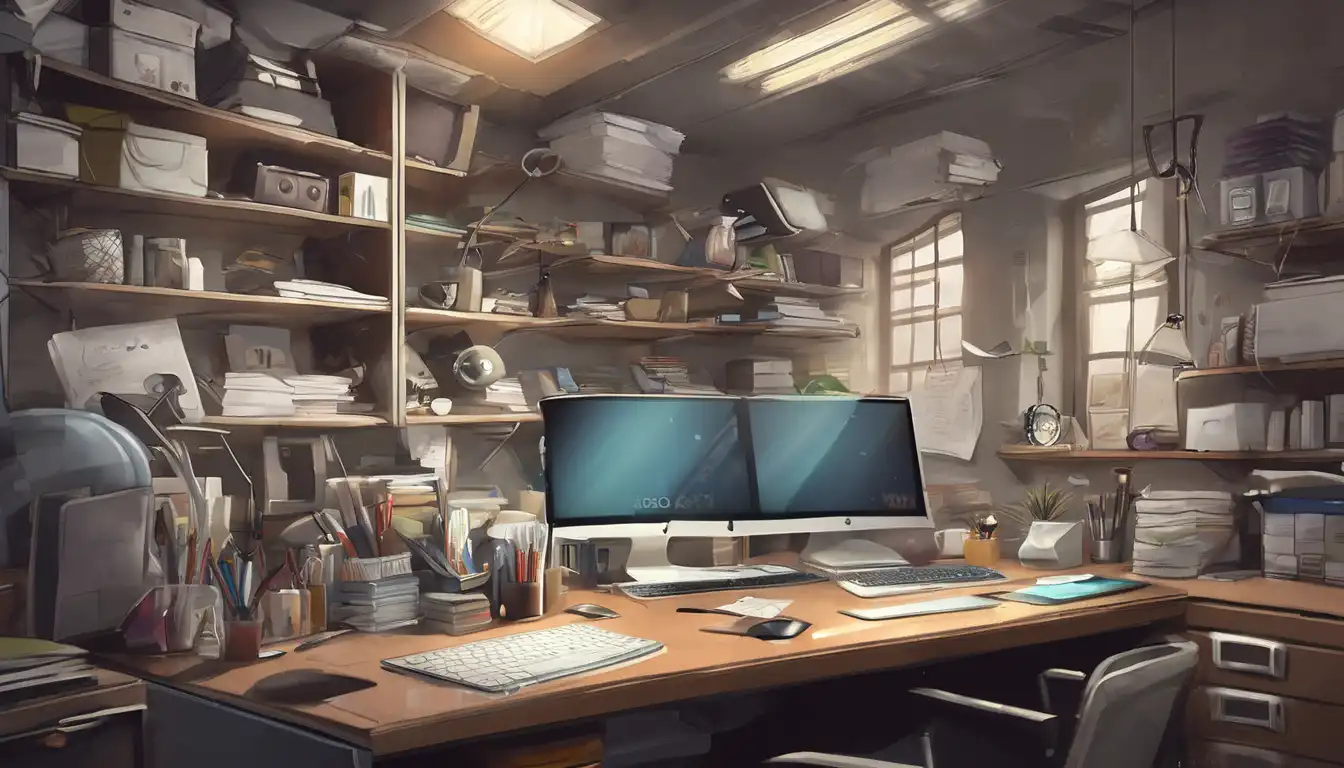Transform Your Workspace for Maximum Focus and Efficiency
In today's fast-paced work environment, maintaining focus can feel like an uphill battle. The secret to unlocking your productivity potential might be closer than you think – it's in the organization of your workspace. A well-organized environment doesn't just look good; it directly impacts your ability to concentrate, reduces stress, and enhances overall work performance.
The Psychology Behind Workspace Organization
Research consistently shows that our physical environment significantly influences our mental state. Cluttered spaces lead to cluttered minds, making it difficult to maintain focus on important tasks. When your workspace is organized, your brain can allocate more cognitive resources to the task at hand rather than being distracted by visual noise and disorganization.
Studies from environmental psychology demonstrate that organized environments reduce cortisol levels (the stress hormone) and improve information processing. This means that taking the time to organize your workspace isn't just about aesthetics – it's a strategic investment in your mental clarity and work efficiency.
Essential Elements of an Organized Workspace
Decluttering Your Digital and Physical Space
Start with a thorough decluttering session. Remove everything from your desk and only return items you use daily. For digital organization, create a systematic folder structure and regularly clean your desktop. Consider implementing the digital minimalism approach to reduce digital distractions.
Physical decluttering should follow the "one-touch" rule – handle each item only once, deciding immediately whether to keep, donate, or discard. This prevents the common pitfall of moving piles from one place to another without making real progress.
Ergonomic Considerations for Long-Term Comfort
Proper ergonomics are crucial for maintaining focus throughout the workday. Ensure your chair supports your lower back, your monitor is at eye level, and your keyboard and mouse are positioned to prevent strain. Investing in quality ergonomic furniture pays dividends in sustained concentration and physical well-being.
Consider incorporating standing desk options or ergonomic accessories like wrist rests and monitor arms. These small adjustments can significantly impact your comfort and, consequently, your ability to maintain focus during extended work sessions.
Strategic Layout and Zone Creation
Divide your workspace into functional zones based on your work activities. Common zones include:
- Primary work zone: Where you complete your most important tasks
- Reference zone: For frequently used materials and resources
- Supply zone: Organized storage for office supplies
- Personal zone: Items that boost morale and comfort
This zoning approach minimizes unnecessary movement and keeps essential items within easy reach. It also creates mental boundaries that help your brain transition between different types of work more efficiently.
Lighting and Environmental Factors
Proper lighting is often overlooked but plays a critical role in focus and productivity. Natural light is ideal, but if that's not possible, invest in quality artificial lighting that reduces eye strain. Consider adding task lighting for specific work areas and ambient lighting for overall comfort.
Temperature and air quality also impact concentration. Maintain a comfortable temperature (typically between 68-72°F) and ensure good ventilation. Adding plants can improve air quality while providing visual breaks that reduce eye fatigue.
Daily Maintenance Routines
Organization isn't a one-time event – it requires consistent maintenance. Develop end-of-day routines that include:
- Clearing your desk of non-essential items
- Organizing papers and files
- Wiping down surfaces
- Preparing for the next day's priorities
These quick routines (5-10 minutes maximum) ensure you start each day with a clean, organized space ready for focused work. This practice also serves as a mental transition between work and personal time.
Technology and Tool Organization
Cable management is essential for both safety and visual clarity. Use cable organizers, labels, and routing solutions to keep cords tidy and accessible. For digital tools, organize your desktop icons, browser bookmarks, and applications in a logical hierarchy.
Implement a consistent naming convention for digital files and establish a regular backup routine. Consider using productivity apps that help maintain organization while minimizing distractions. The right productivity tools can significantly enhance your organizational system.
Personalizing Your Space for Optimal Focus
While organization is key, your workspace should also reflect your personality and work style. Incorporate elements that inspire you – whether it's artwork, motivational quotes, or personal mementos. However, maintain balance to avoid visual clutter.
Color psychology suggests that certain hues can influence mood and concentration. Blues and greens are often associated with calm and focus, while warmer tones can stimulate creativity. Choose colors that support your specific work requirements.
Measuring the Impact of Your Organized Workspace
After implementing these organizational strategies, track your productivity metrics. Notice changes in:
- Time spent searching for items
- Ability to maintain focus on complex tasks
- Overall stress levels
- Quality of work output
Regular assessment helps you refine your organizational system and identify areas for improvement. Remember that organization is personal – what works for one person may need adjustment for another.
Sustaining Your Organized Workspace
Maintaining an organized workspace requires ongoing commitment. Schedule monthly "organization check-ins" to reassess your system and make necessary adjustments. As your work evolves, your organizational needs may change.
Consider sharing organizational strategies with colleagues or family members who share your space. Consistent organizational practices among all users help maintain the system's effectiveness. For more tips on maintaining organizational habits, explore our guide on building sustainable habits.
An organized workspace is more than just a neat environment – it's a powerful tool for enhancing focus, reducing stress, and boosting productivity. By implementing these strategies consistently, you'll create a workspace that supports your professional goals and personal well-being. Start with small changes today, and gradually build toward the perfectly organized workspace that helps you achieve your best work.
